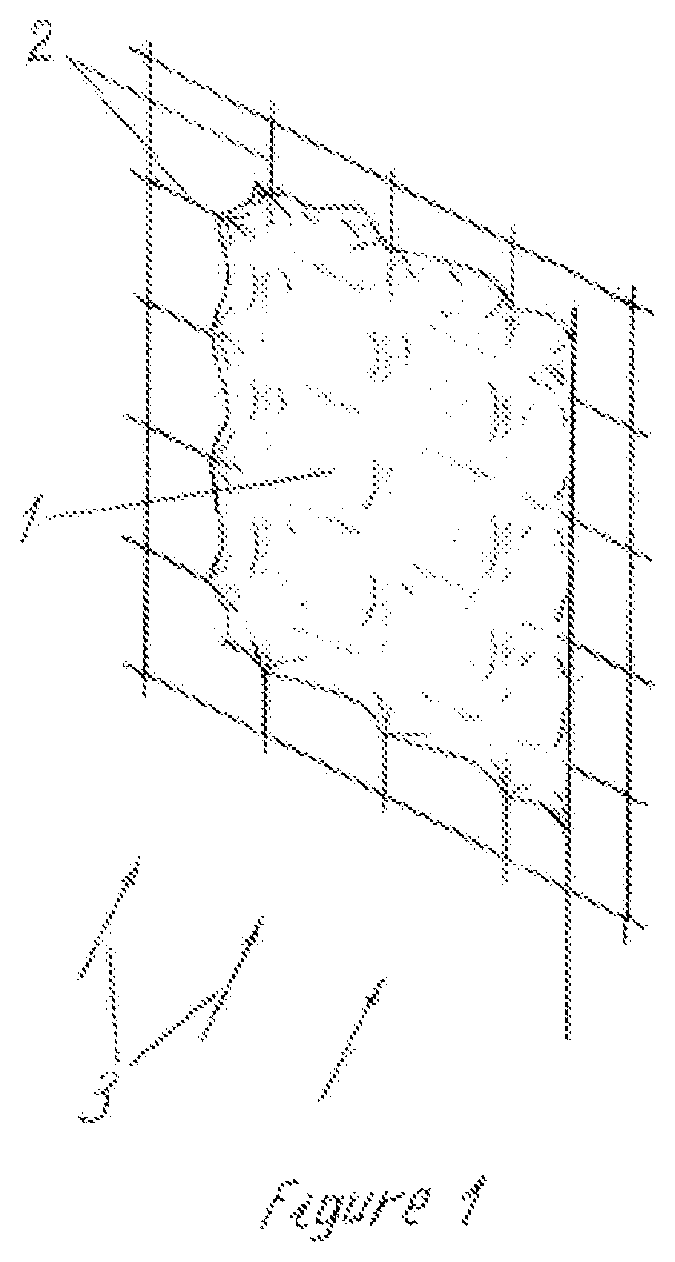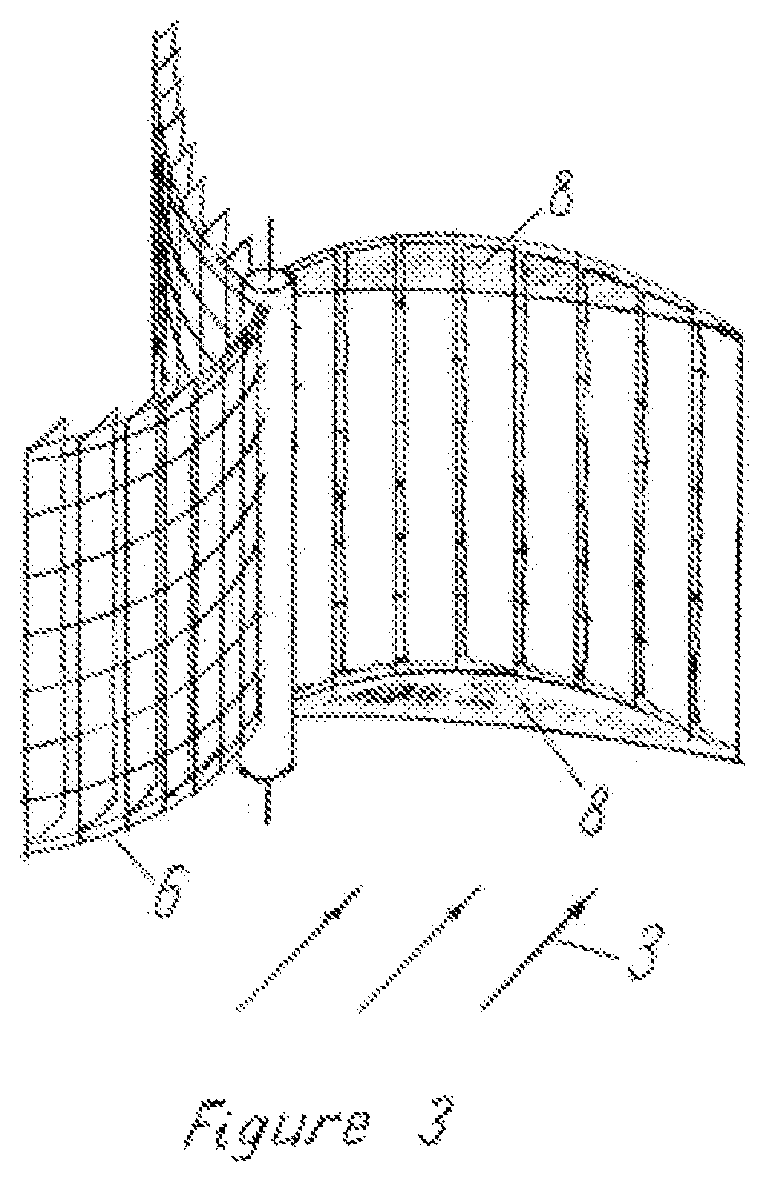Rotary converter of wind energy with a vertical axis of rotation
a technology of wind energy and rotary converter, which is applied in wind power generation, greenhouse gas reduction, renewable energy generation, etc., can solve the problems of affecting the cost of electricity produced by, the possibility and effectiveness of the turbine, and the wide range of use of the turbine, so as to achieve the control of the impact of the wind and torque on the shovel, the control of the size of the flag, and the control of the effect of the wind and torqu
- Summary
- Abstract
- Description
- Claims
- Application Information
AI Technical Summary
Benefits of technology
Problems solved by technology
Method used
Image
Examples
Embodiment Construction
[0024]FIG. 1 shows a flag 1 and wind-permeable structure 2, which limits the capability of the flag to take the direction of the wind 3 into certain directions. Pressed to the structure, the flag forms a surface, which prevents the passage of the air flow. This surface increases the air resistance of the structure and the impact of the wind on it. The surface is variable because its forming depends on the capability of the flag to take the direction of the airflow. When the flag has this capability, such surface is not formed. The airflow passes through the structure by meeting minimum resistance. The variable flag-formed surface changes the air resistance as well as the impact of the wind to the structure. When this impact causes a movement of the structure, this surface is called “working surface”, or “variable flag-formed working surface”.
[0025]FIG. 2 shows a rotary converter of wind energy with a vertical axis of rotation, having shovels with a variable flag-formed working surfa...
PUM
 Login to View More
Login to View More Abstract
Description
Claims
Application Information
 Login to View More
Login to View More - R&D
- Intellectual Property
- Life Sciences
- Materials
- Tech Scout
- Unparalleled Data Quality
- Higher Quality Content
- 60% Fewer Hallucinations
Browse by: Latest US Patents, China's latest patents, Technical Efficacy Thesaurus, Application Domain, Technology Topic, Popular Technical Reports.
© 2025 PatSnap. All rights reserved.Legal|Privacy policy|Modern Slavery Act Transparency Statement|Sitemap|About US| Contact US: help@patsnap.com



